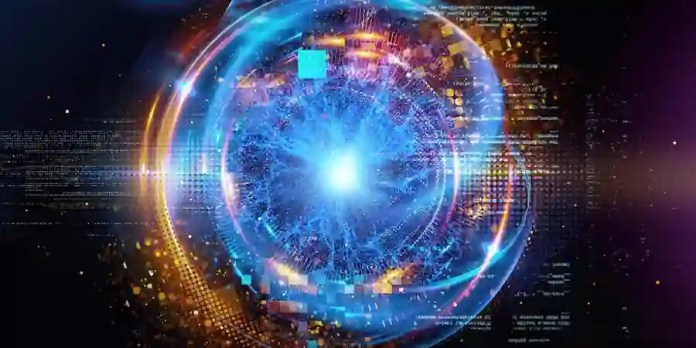Photons are Powerful Even in Chaos
Researchers used a quantum processor to create a phenomenon where microwave photons become unusually “sticky” and form clusters. This behavior was unexpected and goes against what is normally observed with these photons. The discovery was made possible by the use of a quantum processor, highlighting the increasing importance of these platforms in studying quantum dynamics.
Generally, photons are considered to be fundamental particles that do not interact with each other. This is because they have no electric charge and do not experience the electromagnetic force, which allows charged particles to interact with each other. However, under certain conditions, it is possible to create situations where photons do interact with each other, such as in an array of superconducting qubits. In this case, the photons become “sticky” and can form clusters, which was the finding that was described in the original statement. This behavior is unexpected and goes against what is normally observed with photons.
Researchers at Google Quantum AI published a paper in the journal Nature on December 7, 2021, describing how they used a quantum processor to create a situation where microwave photons could interact with each other and form clusters, or “bound states.” They used a ring of 24 superconducting qubits to study the behavior of these photons and applied quantum gates to pairs of neighboring qubits to enable the photons to interact with each other. This behavior was unexpected and goes against what is normally observed with photons. The research highlights the increasing importance of quantum processors in studying quantum dynamics.
The interactions between the photons in the experiment affected their phase, which is a measure of the oscillation of their wavefunction. In the case of non-interacting photons, their phase accumulation is relatively uninteresting because they are all in sync with each other, like a well-rehearsed choir. However, in the case of interacting photons, the phase accumulation can become more complex and interesting because the photons can influence each other’s phase. When a group of photons is initially clustered on neighboring sites, they will evolve into a superposition of all possible paths that each photon might have taken. This behavior was unexpected and goes against what is normally observed with photons, and the discovery was made possible by the use of a quantum processor.
When photons interact with each other, their phase accumulation becomes more complex because they can influence each other’s phase. If one photon hops away from its neighbor, its rate of phase accumulation changes and it becomes out of sync with its neighbors. This leads to destructive interference among all the possible paths that the photons might take, and the only configuration that survives is the one in which all the photons remain clustered together in a bound state. This is why interaction can enhance and lead to the formation of a bound state: by suppressing all other possibilities in which the photons are not bound together. This behavior was unexpected and goes against what is normally observed with photons, and the discovery was made possible by the use of a quantum processor.
In order to demonstrate that the bound states of photons behaved like particles with well-defined properties such as energy and momentum, the researchers developed new techniques to measure the energy of the photons as a function of their momentum. By analyzing the correlations between photons over time and space, they were able to confirm the particle-like nature of the bound states by reconstructing the energy-momentum dispersion relation. This involved studying how the energy of the photons changed with their momentum, which helped to confirm that the bound states behaved like particles.
Bound states, which had previously been predicted and observed in a simpler system called the “integrable regime,” were thought to break apart in more complex, chaotic systems. However, when the researchers tested this by altering the system to a more complex, gear-shaped network of connected qubits, they found that the bound states remained stable even in the chaotic regime. This was unexpected and a significant finding.
Although the team at Google Quantum AI is not certain of the source of the bound states’ unexpected stability, they believe it may be related to “prethermalization,” a phenomenon in which conflicting energy scales within the system can prevent it from reaching thermal equilibrium as rapidly as expected. The researchers hope that studying this system will lead to a better understanding of many-body quantum dynamics and facilitate further discoveries in fundamental physics using quantum processors.
This article has been sourced from the site or sites cited in the references. This content, created without disturbing the content of the original article, is subject to Astrafizik.com content permissions. Astrafizik.com and original sources are allowed to be used by 3rd parties provided that they are referenced.

